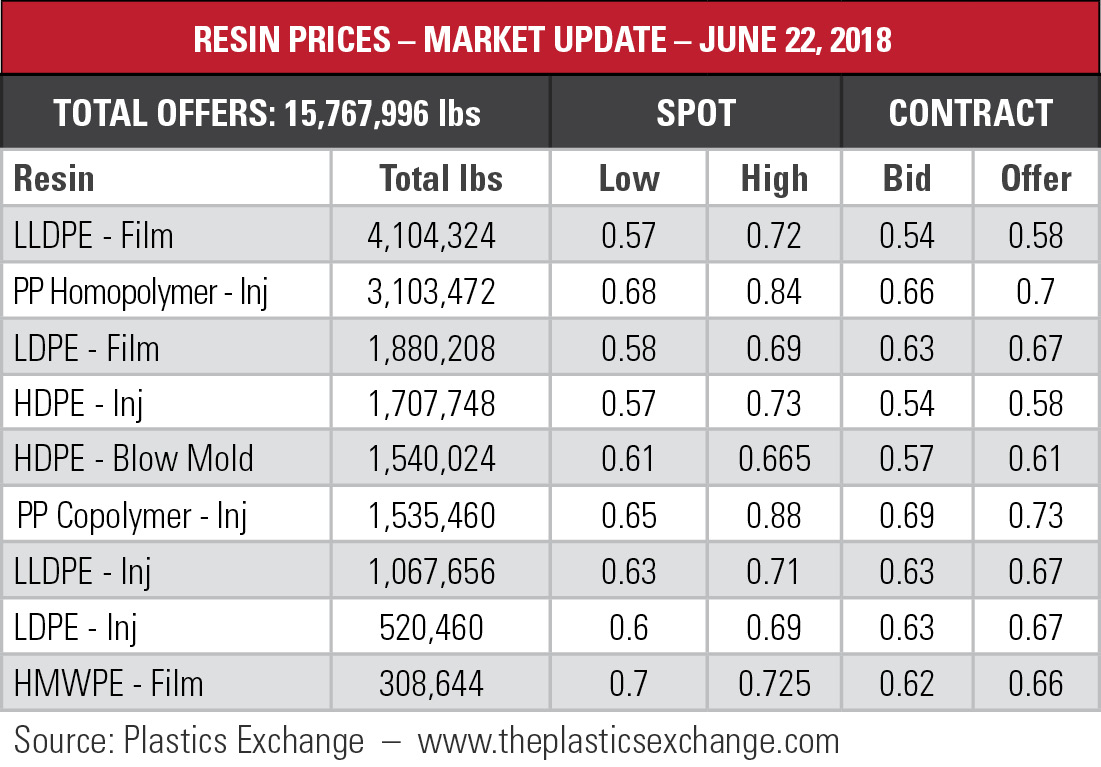
Militant attacks that ignited fires at two Libyan crude oil export terminals stymied market bears this week. The bruins had been feasting on rising U.S. production and an anticipated increase in production from OPEC.
Now it appears OPEC members, meeting this week, may choose a more modest increase than Saudi Arabia has sought. But that does not erase recent warnings from the International Energy Agency (IEA).
 “Higher flows from Saudi Arabia, Iraq and Algeria offset a fall in Nigeria and further declines in Venezuela,” IEA said in its June 13 Oil Market Report. “While the call on OPEC is set to ease in 2019, potential losses from Venezuela and Iran could require others to produce more.”
“Higher flows from Saudi Arabia, Iraq and Algeria offset a fall in Nigeria and further declines in Venezuela,” IEA said in its June 13 Oil Market Report. “While the call on OPEC is set to ease in 2019, potential losses from Venezuela and Iran could require others to produce more.”
The agency sees that extra production coming from the U.S., but with a caveat.
“The United States shows by far the biggest gain (about 75% of the total across 2018 and 2019), but recently this expansion has not been without stress,” said IEA. “The discount for WTI vs. Brent has blown out to $10/bbl, amidst signs that takeaway capacity is lagging behind output growth.”
Full disclosure: I’ve put a jar on my desk that requires contributions every time someone mentions takeaway constraints.
The list of bullish factors is growing:
- OECD stocks are at a three-year low;
- Venezuelan production could tumble to just 800,000 barrels per day (bbl/d) next year from May 2018’s 1.36 million bbl/d average;
- Falling U.S. crude oil inventories; and
- Increased U.S. output is more than matched by higher exports and increased refinery inputs.
 “We are still in the camp that there is limited downside for crude prices as the global fundamentals along with geopolitical risks to crude production vastly outweigh any increase that could come from Saudi Arabia and Russia, if the increase comes at all,” said Envantage Inc. “It still appears to us that upside risks are building.”
“We are still in the camp that there is limited downside for crude prices as the global fundamentals along with geopolitical risks to crude production vastly outweigh any increase that could come from Saudi Arabia and Russia, if the increase comes at all,” said Envantage Inc. “It still appears to us that upside risks are building.”
Envantage sees upside for natural gas prices as well. Benchmark Henry Hub cracked $3 per million Btu (MMbtu) on June 15 for the first time since the end of January.
The National Oceanic and Atmospheric Administration (NOAA) gauges the chances of an El Niño developing in the fall at 50% and winter at 65%.
“The forecaster consensus favors the onset of El Niño during the Northern Hemisphere fall, which would then continue through winter,” reads the forecast. “These forecasts are supported by the ongoing build-up of heat within the tropical Pacific Ocean.”
The Mont Belvieu, Texas, ethane price rose for the fifth straight week, rising above 31 cents per gallon (gal) for the first time since March 2014. The spread expanded by 5.62% over the previous week to 12 cents/gal.
 Propane continued its four-week slide to its lowest price in eight weeks. The U.S. Energy Information Administration (EIA) reported another strong boost of 3.23 million barrels to propane inventories for the week ending June 15. Propane storage has increased 34% in the most recent five-week period.
Propane continued its four-week slide to its lowest price in eight weeks. The U.S. Energy Information Administration (EIA) reported another strong boost of 3.23 million barrels to propane inventories for the week ending June 15. Propane storage has increased 34% in the most recent five-week period.
Envantage speculates that traders share its skepticism concerning the EIA’s propane export data. Its analysts track exports regularly and estimate a weekly average that is about 169,000 barrels higher than the what the government agency is showing.
Joseph Markman can be reached at jmarkman@hartenergy.com and @JHMarkman.
Recommended Reading
Trump Tariff Threat Raises Consternation Among Oil Lobbying Groups
2024-11-26 - Late Nov. 25, President-elect Donald Trump said one of his first executive orders would be to enact a 25% tariff on “all products” originating from Canada and Mexico, a move that could escalate refined products prices.
Harris or Trump? Majors’ CEOs Say ‘Nothing's Going to Change’
2024-11-05 - The captains of BP, Shell, Petronas and Eni see the U.S. election as a short-term event, although the results could raise tensions with China and put the fate of the Inflation Reduction Act up in the air.
Attitude Adjustment Incoming from DC, Energy Experts Say
2024-11-25 - The energy Industry can expect more cooperation from the federal government through personnel and policy adjustments.
Kissler, Wyett: Trump Tariffs and Potential Energy Market Aftershocks
2024-12-20 - U.S. production and prices may increase; global cooperation may decrease; but Trump’s previous tariffs had less of an impact on import prices than the COVID pandemic.
Buoyed by Oil and Gas, Trump Poised to Retake the White House
2024-11-06 - President Donald Trump penetrated the blue wall for a second time, taking Pennsylvania’s crucial 19 electoral votes in a nail-biter on election night.
Comments
Add new comment
This conversation is moderated according to Hart Energy community rules. Please read the rules before joining the discussion. If you’re experiencing any technical problems, please contact our customer care team.






